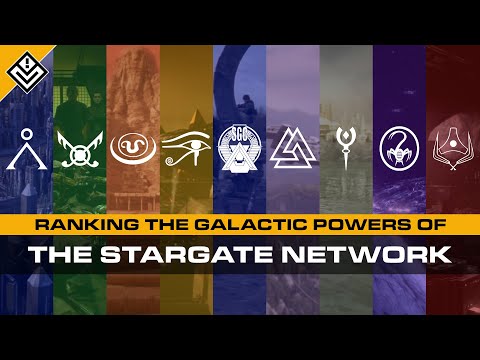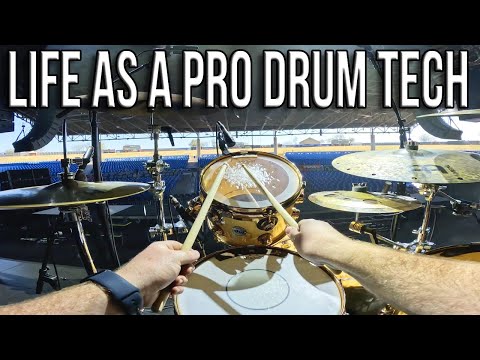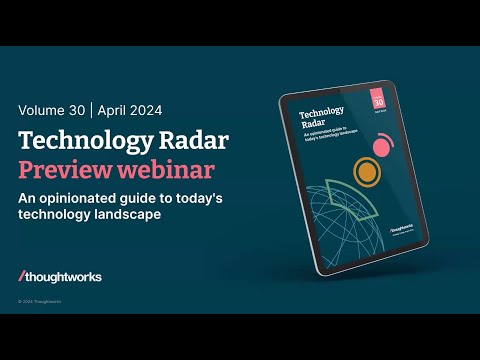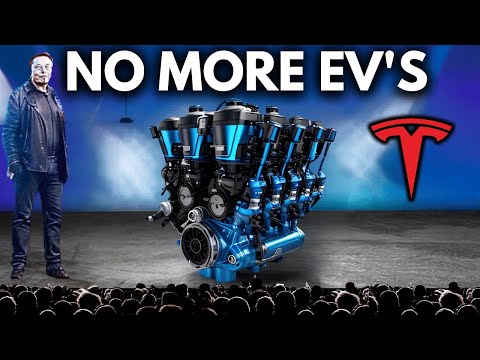Ranking the Galactic Powers of Stargate | Hyperpowers, Great Powers, Regional Powers & Minor Powers

The first Stargate Teams sent out across the galaxy had only the most hazy idea of what kind of a political and military theater they were entering. Encounters with the Goa'uld had made it clear that hostile powers existed, but their relative strength, the disposition of their forces, whether they had allies and enemies, all these were completely unknown. It is understandable then that one of the first objectives of Stargate Command’s earliest missions was to try and understand the relationship between the great powers of the galaxy, their hierarchy, and Earth’s standing in comparison to them.
This is an area of study that has appealed to the Templin Institute as well, and thanks to the efforts of Stargate Command, we’re now able, with at least some degree of accuracy, to rank the Galactic Powers of the Galaxy. Now a great many organizations, nations and civilizations might be found across the Stargate Network, ranging from enormous Interstellar States spanning hundreds of worlds, to pre-industrial, agrarian, or even hunter gatherer societies. And the balance of power between them has often suddenly and dramatically shifted, so for the purposes of this investigation, we’ll be looking at two distinct time periods: 1997, the first year of Stargate Command’s operations, and 2010, right around the launch of the Destiny Expedition. Across this comparatively brief but transformative era, 9 civilizations had the most pronounced influence on galactic affairs: The Goa'uld System Lords, Asgard, Free Jaffa Nation, Lucian Alliance, Ori, Wraith, Genii, Asurians and Stargate Command. Stargate Command in this instance it should be clarified, will be used to represent the collective power of Earth as a whole, even if this isn’t an entirely accurate reflection of the SGC’s role. And as with our previous rankings of interstellar powers, we’ll be using the following categories: Hyperpowers, Superpowers, Great Powers, Regional Powers, Middle Powers, and Small Powers.
Each faction will be judged on their ability to project power in various ways, primarily through economic, military, technogicial, political, or cultural means. Okay, so let's begin with Stargate Command. In 1997, the capabilities of this organization, and Earth as a whole, might charitably be described as limited. It represented only a single nation-state among many as no planetary government existed, possessed no method of interstellar travel outside of the Stargate Network, and subsequently had only the barest methods of interstellar deterrence. Had almost any of the other powers in this ranking attempted an invasion of Earth during this period, Stargate Command would have been hard-pressed to offer meaningful resistance. But Earth did have a few elements in its favor.
It might have lacked the starships and colonies of a true interstellar power, but its technology was highly advanced. The nations of the planet had fully industrialized and were in the midst of a global and rapid shift to an information based economy. Through a global system of interconnected computer networks the dissemination of information had become nearly instantaneous and became a major driving force of a sustained sociocultural evolution. If you were to rank, not just the 10 most technologically sophisticated civilizations, but every civilization across the Milky Way and Pegasus galaxies, Earth would probably be in the top percentile. Now It might be unfair to compare Stargate Command to a bunch of agricultural societies, but even against the other civilizations in this ranking, they at times matched, and even surpassed these other powers in specific sectors.
In manufacturing, consumer staples, industrial machinery and engineering, finances, software and hardware, Earth had a qualitative advantage over many interstellar powers, if not in technological sophistication, than in their widespread implementation across the planet. Stargate Command’s greatest asset however, was its effective diplomacy. Earth diplomats, having been accustomed to acting within a complex international system, were extraordinarily good at brokering treaties and agreements, and leveraging the shared cultural heritage between Earth and the thousands of other human worlds across the universe. With all this considered, I am ranking Stargate Command as a middle power. Next we have the Goa'uld System Lords.
Superficially, their collective Empire might appear highly advanced. They controlled hundreds of worlds, enormous fleets of warships, and possessed technology was far superior to most other civilizations. Rival powers who might have challenged were instead focused inwards, leaving the Goa'uld as largely uncontested masters over much of the galaxy. But ironically, their unchallenged primacy created systemic internal issues within every facet of their society. Politically, the Goa'uld operated under a primitive feudal system, reminiscent of the sort that had become outdated on Earth during the 15th century.
Constant power struggles and rivalries between the System Lords left their shared Empire unstable, and easily susceptible to internal coups and civil wars. Nevertheless it was their heavy use of slaves in both their labor force and military that presented the only real threat to their continued rule. Technology was therefore restricted and suppressed across their Empire, with only the upper leadership castes showing any real sophistication. This in turn severely blunted their industrial, economic and scientific capabilities. Even so, in 1997 there was no real external threat to the Goa'uld, and these issues had not yet become critical.
Accordingly I’d rank Goa'uld as somewhere between a superpower and hyperpower, leaning very slightly towards the latter. This is not to say that their empire was the most powerful on the galactic stage, it wasn’t. But the Goa'uld were active in projecting their power to an extent that no other civilization could match. The closest thing the Goa’uld might have had during this time to a rival, was the Asgard. At their height, they would have unquestionably been a hyperpower as well. Their technology far surpassed that of almost every other major civilization, and unlike the Goa’uld, it permeated their entire society.
Their worlds were highly urbanized and cultured, their ships some of the fastest in the galaxy, and their civilization was interconnected and politically stable. But in this era, their golden age was long behind them. For all their success, the Asgard were also a dying race, technologically stagnant, and suffering widespread genetic degradation as a result of continuous cloning. As their numbers dwindled, so too did their ability and willingness to project power. They had also become embroiled in a conflict with a race of self-replicating machines, further hindering their ability to confront rivals like the Goa’uld.
While the Asgard did attempt to enforce certain treaties across the Milky Way, their leverage in diplomatic negotiations came from the perceived power of their civilization, more than their actual capabilities. I rank the Asgard as a superpower. Next up, we have the Free Jaffa Nation, which technically in 1997 had not yet been established.
Even the Rebellion that would one day create it was only in its earliest stages. But the memory of previous uprisings across the Jaffa population against their Goa’uld masters was a powerful force, and while it hadn’t yet achieved any kind of statehood, and wasn’t projecting power in the same way as the other entries in this ranking, it was still a cultural force if nothing else. But the expression of that force was entirely limited, and internal to the Goa’uld Empire, so I am forced to label it as a Small Power, although even this classification might be a bit too generous. Like the Free Jaffa Nation, the Lucian Alliance had yet to come into being in 1997. A confederation of smugglers, pirates and mercenaries, the group as it would come to be, simply couldn’t exist while the Goa’uld was at its height.
For now, I rank them as a Minor Power, certain elements might have existed during this time, but their capabilities were extremely limited. Next we head to the Pegasus Galaxy, with its own unique power structure, one largely based around the Wraith Domain. Now the Wraith are an interesting entry in this ranking, as they are one of those civilizations that don’t conform too well to the study of Power in International Relations. Technically, the Wraith control do control the entire Pegasus Galaxy and have done so for roughly ten millennia, but their hibernation cycles mean that this control really only expresses itself in practical terms every few hundred years. On certain worlds, entire generations might go by without ever knowing that they exist under the Wraith. And when the Wraith are active, it is typically only to feel on their subject populations.
They have no capability or desire to project any other expression of state power. Their technology, while advanced, is notably behind that of Asgard, yet similarly stagnant and lacking any signs of innovation. Like the Goa’uld, their status is largely the result of lacking any external rivals rather than their own internal strength. Even so, I think it's fair to label them a Hyperpower as in this specific timeframe, their rule, such as it is, is completely unchallenged. Now the Genii are one of the many civilizations that have suffered under the Wraith, but have managed to adapt in a unique way. While they outwardly purport to be a race of simple farmers and laborers, they are in fact an industrialized, militaristic society, carefully hidden so as to prevent their eradication.
They are roughly 60 years behind Stargate Comnand and Earth, though this still places them in the upper tier of technological sophistication. Now, maintaining this facade makes it difficult for the Genii to project power, but not impossible. They maintain a number of hidden bases and outposts across their galaxy, as well as a large intelligence network. Like Stargate Command, they have leveraged their shared heritage with other, more primitive human civilizations to acquire trading partners and informants. This emphasis on covert operations has given the Genii a far greater understanding of the Pegasus Galaxy than their limited technology might otherwise have allowed.
But their limited population, and the ultimate necessity of keeping their comparatively advanced nature hidden from the Wraith is still a major limiting factor. I’d rank the Genni as a regional power. This takes us to the Asurans, one of the few technologically advanced species in their galaxy to overcome the Wraith. A race of nanomorphs created by the same Ancients who laid the foundations of the Stargate Network, the Asurans are likely the single most technologically sophisticated species in the galaxy.
They far exceed even the Asgard, and have retained the innovation and vibrancy that so many species in a similar state of development seem to lack. Had they desired it, the Asurans could have become a galaxy spanning Hyperpower, but their isolationist nature has wholly prevented this. In this specific timeframe, the Asurans are a regional power at best. Capable of projecting every aspect of power in overwhelming amounts, but completely lacking the interest to do so.
Last on our list of galactic powers, we have the Ori who at this time were concentrated in a distant galaxy well beyond the Milky Way or Pegasus. Their society in many ways resembles the Gou’uld, possessing enormous technological advances, but keeping them limited to an upper caste of theologians. The idea of Ori warships, as powerful as they were being constructed with wood scaffolding directly on the ground, has always baffled me. Yet the Ori were in many ways, the true manifestation of what the Gou’ld merely pretended to be, gods that had ascended to a higher plane of existence and were now able to manipulate physical reality in a number of ways. While the state of their empire in their home galaxy is largely unknown during this period, its difficult to imagine them as anything other than a hyperpower.
So this is how the situation appeared in 1997, but how do things change when we fast forward 13 years to 2010. Well, it’s hard to imagine a more tumtulous transition in galactic history. Right away, we need to remove a few major powers from the board. In 2010, the Asgard, Ori, and Asurians, have been rendered either completely extinct, or close enough so as to make no discernible difference. To lose just one of these powers is extraordinary, these are all ancient states with immense capabilities, even if they didn’t always use them.
As you might expect, the power vacuum they have left behind, fundamentally transforms the state of their respective galaxies. Stargate Command has become almost unrecognizable. In fact I think it’s hard to imagine a more striking and rapid ascent.
It now possesses a fleet of some of the most capable warships ever operated and has a growing network of colonies, though these settlements are strictly for research or military use rather than large scale settlement. It also has acquired the complete sum of the Asgard’s knowledge and though it will take many more decades or centuries for humanity to reverse engineer their greatest achievements, even without it, the technology available to Earth has increased exponentially, from limitless energy to teleportation. And perhaps most critically, many of the powers originally hostile to Earth have been either eradicated, or removed as serious threats for the foreseeable future. Stargate Command isn’t quite a hyperpower, as its lack of territorial holdings outside its homeworld and the ignorance of its own population to their own interstellar status have become major disadvantages, but it's very close.
I am ranking it as a superpower. The Goa'uld have progressed just as far in the opposite direction, to the point where they might have even disintegrated completely. Their confrontation with Earth was disastrous for the System Lords, bringing the disadvantages of their society to the forefront.
Having directed so much of their focus on suppressing an internal rebellion, they proved completely incapable of responding in an effective manner to an external threat. Technically every system lord had been defeated by 2010, but I’m inclined to believe there’s still a few minor holdings and competing successor states. So I’d rank the Goa'uld as a minor power. The Free Jaffa Nation has, as a natural and expected consequence, emerged as a much more powerful force. In some cases they have inherited much of the Goa’uld Empire.
That said, the Jaffa High Council is divided between traditionalists who want to model their state on the Goa’uld, and progressives in favor of a secular Republic. Whichever side triumphs though, the Jaffa have been a conquered people for so long, their worlds so heavily exploited, that the transition to a modern state will take a great deal of time. The Ori Crusade in particular exposed just how vulnerable the Jaffa Nation was, with most of their equipment and technology second or third rate.
With that in mind, I would label the Free Jaffa Nation, a great power. The Lucian Alliance has also benefited immensely from the fall of the Goa’uld, now able to operate openly for the first time. It shares many of the same disadvantages as the Jaffa however, with a divided, opportunistic leadership and second rate equipment.
It is further weakened by the fact that while it might operate under the pretext of a formal government, it’s really just a criminal organization with no real internal coherence or legitimacy. This at once makes it especially dangerous however, as it is willing to undertake operations and attacks that a true nation never would. That said, there has likely never been a better time for an organization like this to operate, with the Goa’uld and then Ori leaving the galaxy in a state of chaos and the Asgard no longer around to serve as a stabilizing influence. I am ranking the Lucian Alliance as a regional power. As for the Wraith, they suffered through their own steep decline and civil war, again at the hands of Stargate Command, but their collapse has not been total.
It’s difficult to determine exactly where they stand in 2010, but it seems likely their feeding cycle has been put to a premature end and they’ll be forced back into hibernation. On the surface it might seem like they’ve returned to the status quo, but while in 1997 there was no real threat to their supremacy, whenever they reawaken, the situation will be far different. Depending on how deep their own internal division runs, I’d be tempted to assess them as nothing more than a regional power now, but given the lack of information, I’ll instead assume they remain a great power.
This just leaves the Genii. Unfortunately, as with the Wraith, we can really only speculate as to their current status as current information is still lacking. It seems fairly certain that the Genii have only benefited from the decline of the Wraith, but maybe not enough to have climbed the hierarchy of galactic powers in any meaningful way. Their early hostility to Stargate Command and the Atlantis Expedition was a major blunder, turning a potential powerful ally into an enemy, and while a change in leadership did succeed a warming of relations, I think it came too late. If the Genni can achieve a lasting agreement with Earth, I think it’s likely they’ll be able to emerge as a far more capable power, but until then, I think they need to remain were they were in 1997, a regional power at best.
But that of course, is just my opinion, and even though I have ascended to a higher plane of existence and my knowledge and wisdom is beyond your understanding, I’d still like to hear your thoughts. Do you agree with my placements? Was it a mistake to not include the Tokra or the Furlings? What would your rankings look like? Let me know in the comments below, and until next time, this has been Incoming.
2022-11-08 18:20


